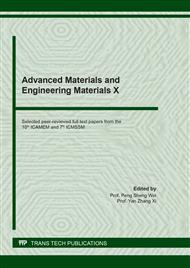p.59
p.65
p.70
p.76
p.82
p.88
p.97
p.103
p.111
Effect of Twice Stablizing Heat Treatment on the Properties of 347H Stainless Steel
Abstract:
In this study, the mechanical properties and intergranular corrosion properties of 347H austenitic stainless steel were studied by tensile test, impact test, double-ring electrochemical potentiodynamic reactivation test (DL-EPR) and microstructure observation in three states of solution, primary and twice stabilized state. Results showed that the key mechanical properties of 347H stainless steel under three different conditions had little change, and the mechanical properties at room temperature were not affected by the stabilizing heat treatment. After 12h of sensitization, the solution material showed obvious sensitization behavior, and the Ir/Ia index exceeded 0.3, indicating that the material entered the range of complete sensitization. Both primary and twice stabilizing heat treatment can significantly reduce the occurrence time of sensitization and prevent the sensitization process. However, the stabilizing heat treatment cannot completely prevent the material sensitization, and it must be combined with other methods .
Info:
Periodical:
Pages:
82-87
Citation:
Online since:
November 2021
Authors:
Price:
Сopyright:
© 2021 Trans Tech Publications Ltd. All Rights Reserved
Share:
Citation:


